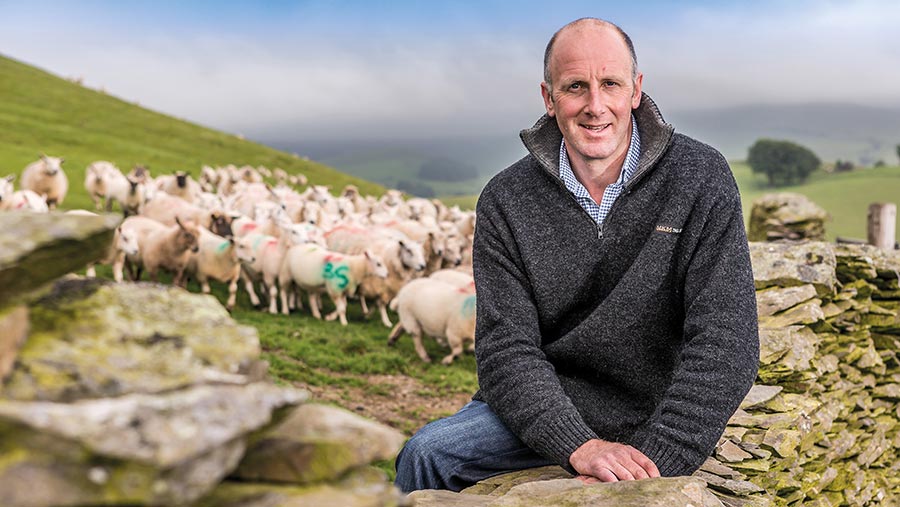Farmer Focus: Experimenting with new tup breeds
 Daffyd Parry-Jones © Richard Stanton
Daffyd Parry-Jones © Richard Stanton This year we introduced some new tup breeds as an experiment to improve lamb performance and maternal traits for the next season.
In early October, we used tag colours to sort the ewes into different age categories. Various breeds of tup were turned into specified groups.
We will be able to mark the lambs accordingly at next year’s lambing.
We tend to use Innovis-bred rams to breed replacements. We have used Aberfields, but this year we bought two Aberblack rams, mainly for replacement purposes, and have an Abermax as a terminal sire, too.
See also: Advice for buying rams based on EBVs
The rams are bought based on performance figures. We will do some comparisons and find out their true potential. We also bought a pedigree Charollais ram at market, selected on looks and conformation as a terminal sire.
We try to buy the rams early in August so we have a sufficient quarantine period before we introduce them to the flock, and the whole family can get involved in the selection process during the school holidays.
During the weeks leading up to tupping, the ewes were in a large gang of more than 500.
They were used for mob-grazing, moving around the fields every three to four days. Late August into September is normally a time of good grass growth, and this year was no exception.
Towards the end of September, we must mob-graze all excessive grass growth to prevent any August-grown grass surviving into late October and turning yellow and stale, losing quality.
Lambs were fattening very well on white clover swards during September. A few trailer loads were taken to the local abattoir, averaging a deadweight of well over 19kg.
I was concerned that we might have slightly overcooked them, but only one exceeded the top weight threshold of 21.5kg, and another one ventured into 4L.
Having lambs in spec is extremely important to avoid financial penalties and wasting grass. We typically weigh fortnightly to keep track of growth.
September also proved a sociable month, with a tractor and quad bike run to raise money for local charities.
It gave us an opportunity to familiarise ourselves with all those hidden valleys and spectacular views in our native county of Maldwyn, Montgomeryshire.

